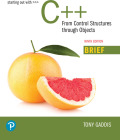
A)
Relational Operators:
Relational operators are used to compare numeric and character values using the following operators:
- Greater than (>)
- Less than (<)
- Greater than or equal to (>=)
- Less than or equal to (<=)
- Equal to (==)
- Not equal to (!=)
These operators will determine whether specific relationship exists between two values of same type.
Relational Expression:
- Relational operators are “binary”, so it needs two operands for comparison. Consider the following expression using the less-than operator:
A < B
- The above expression is called a “relational expression”. It is used to find whether “A” is less than “B”.
- Relational expression is also referred as “Boolean expression”, because the resultant value of all relational expression is either “True” or “False”. But the states of Boolean values are stored as 0 and 1.
- Hence, if the resultant value of relational expression is 0, then the expression is “False”. If the resultant value of relational expression is 1, then the expression is “True”.
Evaluating the given relational expression with “yes” or “no”:
B)
Relational Operators:
Relational operators are used to compare numeric and character values using the following operators:
- Greater than (>)
- Less than (<)
- Greater than or equal to (>=)
- Less than or equal to (<=)
- Equal to (==)
- Not equal to (!=)
These operators will determine whether specific relationship exists between two values of same type.
Relational Expression:
- Relational operators are “binary”, so it needs two operands for comparison. Consider the following expression using the less-than operator:
A < B
- The above expression is called a “relational expression”. It is used to find whether “A” is less than “B”.
- Relational expression is also referred as “Boolean expression”, because the resultant value of all relational expression is either “True” or “False”. But the states of Boolean values are stored as 0 and 1.
- Hence, if the resultant value of relational expression is 0, then the expression is “False”. If the resultant value of relational expression is 1, then the expression is “True”.
Evaluating the given relational expression with “yes” or “no”:
C)
Relational Operators:
Relational operators are used to compare numeric and character values using the following operators:
- Greater than (>)
- Less than (<)
- Greater than or equal to (>=)
- Less than or equal to (<=)
- Equal to (==)
- Not equal to (!=)
These operators will determine whether specific relationship exists between two values of same type.
Relational Expression:
- Relational operators are “binary”, so it needs two operands for comparison. Consider the following expression using the less-than operator:
A < B
- The above expression is called a “relational expression”. It is used to find whether “A” is less than “B”.
- Relational expression is also referred as “Boolean expression”, because the resultant value of all relational expression is either “True” or “False”. But the states of Boolean values are stored as 0 and 1.
- Hence, if the resultant value of relational expression is 0, then the expression is “False”. If the resultant value of relational expression is 1, then the expression is “True”.
Evaluating the given relational expression with “yes” or “no”:
Want to see the full answer?
Check out a sample textbook solution
Chapter 4 Solutions
EBK STARTING OUT WITH C++
- EX:[AE00]=fa50h number of ones =1111 1010 0101 0000 Physical address=4AE00h=4000h*10h+AE00h Mov ax,4000 Mov ds,ax; DS=4000h mov ds,4000 X Mov ax,[AE00] ; ax=[ae00]=FA50h Mov cx,10; 16 bit in decimal Mov bl,0 *: Ror ax,1 Jnc ** Inc bl **:Dec cx Jnz * ;LSB⇒CF Cf=1 ; it jump when CF=0, will not jump when CF=1 HW1: rewrite the above example use another wayarrow_forwardEX2: Write a piece of assembly code that can count the number of ones in word stored at 4AE00harrow_forwardWrite a program that simulates a Magic 8 Ball, which is a fortune-telling toy that displays a random response to a yes or no question. In the student sample programs for this book, you will find a text file named 8_ball_responses.txt. The file contains 12 responses, such as “I don’t think so”, “Yes, of course!”, “I’m not sure”, and so forth. The program should read the responses from the file into a list. It should prompt the user to ask a question, then display one of the responses, randomly selected from the list. The program should repeat until the user is ready to quit. Contents of 8_ball_responses.txt: Yes, of course! Without a doubt, yes. You can count on it. For sure! Ask me later. I'm not sure. I can't tell you right now. I'll tell you after my nap. No way! I don't think so. Without a doubt, no. The answer is clearly NO. (You can access the Computer Science Portal at www.pearsonhighered.com/gaddis.)arrow_forward
- Programming Logic & Design ComprehensiveComputer ScienceISBN:9781337669405Author:FARRELLPublisher:Cengage
 Operations Research : Applications and AlgorithmsComputer ScienceISBN:9780534380588Author:Wayne L. WinstonPublisher:Brooks Cole
Operations Research : Applications and AlgorithmsComputer ScienceISBN:9780534380588Author:Wayne L. WinstonPublisher:Brooks Cole C++ for Engineers and ScientistsComputer ScienceISBN:9781133187844Author:Bronson, Gary J.Publisher:Course Technology Ptr
C++ for Engineers and ScientistsComputer ScienceISBN:9781133187844Author:Bronson, Gary J.Publisher:Course Technology Ptr - Np Ms Office 365/Excel 2016 I NtermedComputer ScienceISBN:9781337508841Author:CareyPublisher:Cengage
 EBK JAVA PROGRAMMINGComputer ScienceISBN:9781305480537Author:FARRELLPublisher:CENGAGE LEARNING - CONSIGNMENT
EBK JAVA PROGRAMMINGComputer ScienceISBN:9781305480537Author:FARRELLPublisher:CENGAGE LEARNING - CONSIGNMENT EBK JAVA PROGRAMMINGComputer ScienceISBN:9781337671385Author:FARRELLPublisher:CENGAGE LEARNING - CONSIGNMENT
EBK JAVA PROGRAMMINGComputer ScienceISBN:9781337671385Author:FARRELLPublisher:CENGAGE LEARNING - CONSIGNMENT





